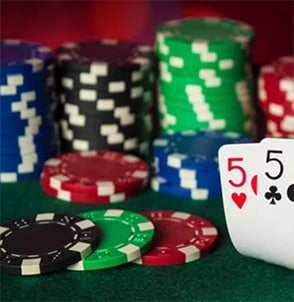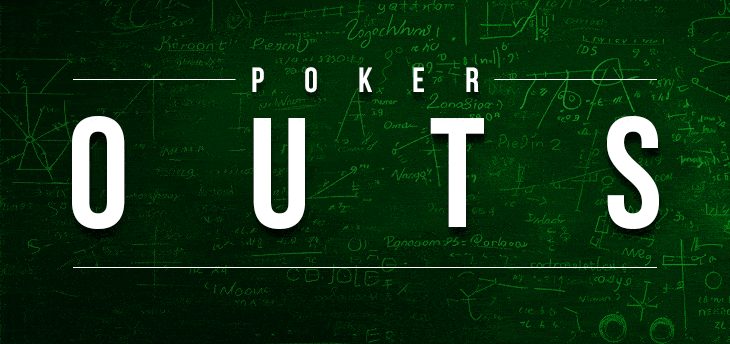Ever been at a poker table, fingers itching, heart racing, wondering if the next card could be your ticket to victory or doom? Well, my friend, you’re not alone. Every poker player, from the greenest newbie to the seasoned pro, has been there. And the key to navigating these treacherous waters? Understanding and counting your poker outs. Let’s dive in!
What on Earth are Poker Outs?
Imagine you’re in the middle of a gripping poker game. You’re holding a hand that’s just one card short of a winning combination. These potential cards that can turn your hand from zero to hero are your ‘outs’. In simpler terms, an out is any unseen card that, if drawn, will boost your hand to one that’s more likely to win. It’s the glimmer of hope, the light at the end of the tunnel, the cheese at the end of the maze.
Why Should I Care About Outs?
Well, do you want to win? Knowing your outs is a crucial part of poker strategy. It’s like knowing the odds in any game of chance. For instance, in draw poker, if you have four diamonds, you have nine outs to make a flush. Why? Because there are 13 diamonds in the deck, and you’ve seen four. Simple math, right? But here’s where it gets juicy. If you’ve got two small pairs and think you need a full house to win, you’ve got four outs: the two remaining cards of each rank you hold.

Outs in Action: A Real-World Example
Let’s paint a picture. You’re playing Texas Holdem. You’ve got two spades, and two more pop up in the flop. You’ve seen five cards in total, with four being spades. So, you’ve got 9 outs for a flush from the 47 cards yet to be drawn. That’s a 9/47 chance to get your flush on the turn. Missed it? You’ve got a 9/46 chance on the river. And if you’re into quick approximations, just double the number of outs and add one to get the percentage to hit on the next card. Handy, right?
But Wait, There’s More
Remember, poker isn’t played in a vacuum. Your opponents’ hidden cards can throw a wrench in your outs calculations. Let’s say the board shows 5♠ K♦ 7♦ J♠, and you’re holding A♦ 10♦. You’ve got at least nine surefire outs. But cards like 5♦ and J♦, while giving you a flush, also open the door for an opponent to have a full house. And that, my friend, is where the thrill of the game lies.
Some Fun Table Talk
- Ever heard someone say, “I had a two-outer”? They’re talking about a hand where only two cards in the deck could turn their fortunes around.
- In poker, terms like “12-way” or “16-way” draw refer to hands where multiple cards can complete the hand. It’s like having multiple keys to the same treasure chest!
- Calculating combined odds for the turn or river can be a tad complex, but with practice, you’ll be doing it in your sleep. Or at least during your poker dreams.

Blockers
In addition to counting outs, there’s another concept that savvy poker players keep in their arsenal: the understanding of ‘blockers’. A blocker is a card in your hand that ‘blocks’ or reduces the likelihood of your opponent having a specific hand. This is crucial in both analyzing your own hand strength and in predicting what hands your opponents might have.
For example, if you’re holding the Ace of Spades in a game where a flush is possible on the board, you know that none of your opponents can have the nut flush and their odds of having a flush is reduced. Similarly, let’s say you have a pair of Tens in your hand and a Ten appears on the flop. This means three of the four Tens in the deck are already accounted for, reducing the likelihood that an opponent will have a hand like Ace-Ten. It’s a subtle but important consideration, especially in situations where the strength of your hand is closely contested, and understanding these nuances can give you a strategic edge in your decision-making.
Blockers are not just about defense; they’re a powerful offensive tool as well. Understanding the blockers you have can help in bluffing scenarios. If you hold cards that block potentially strong hands of your opponent, you can make aggressive plays, knowing that it’s less likely for your opponent to call with a strong hand.
In summary, while outs help you understand the potential for improving your own hand, blockers are about understanding the wider landscape of the game and the range of hands your opponents might hold. It’s a subtle yet powerful aspect of poker strategy that can give you an edge in those nail-biting moments at the table.

The Power of Outs
Understanding and counting outs is more than just a poker strategy; it’s an art. It’s the difference between playing blind and playing with insight. It’s the thrill of knowing that the next card could be your game-changer. So, the next time you’re at the poker table, remember the power of outs. Embrace it, use it, and watch as your game reaches new heights. And who knows? Maybe one day, you’ll be the one teaching others the magic of outs. Until then, shuffle up and deal!
Whether you’re a fan of high-stakes cash games or the excitement of multi-table poker tournaments, GGPoker is the premier destination for poker enthusiasts. For those aiming to compete for a prestigious WSOP bracelet, push through the ranks for a WSOP Circuit ring, or simply hone their strategies in classic games or poker formats, GGPoker has something for everyone. The platform offers a seamless online poker experience, with innovative features like Smart HUD, PokerCraft, and integrated staking, designed to elevate your game. Whether you’re grinding your way up in daily cash games or competing for life-changing prizes in major online series, GGPoker provides the best environment to play, improve your poker skills, and succeed in the world of online poker. And if you are not sure where to start, you can always play free poker games and learn at the GGPoker School.




